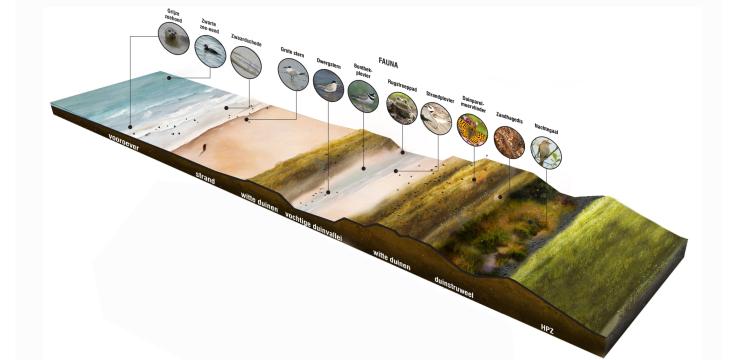Case Study 2: The New Hondsbossche Dunes – Netherlands
The New Hondsbossche Dunes project – one of many examples of the Dutch government’s approach to smart building that utilizes natural processes – initiates and sustains continued dune nourishment. The principle of 'building with nature' is fully exploited to strengthen the Dutch coastline using a plan that couples smart building with layered protection. Superior to fixed solutions or hardscape approaches, the project employs nature to create a place with varied topography, complete with existing dunes overgrown with native vegetation, young drifting dunes and dune valleys, and a beach of varying width, all designed to be consistent with the existing dunes and to minimize dune erosion. The dunes offer natural mitigation from storm surges, with the added benefit of supporting a diverse population of plant and animal species. The plan is considered to be a dynamic solution because shifting sands and vegetation interact with the beach environment and continue to evolve organically and further bolster recreational activities.

Recommended Reading
For more information and project details visit: The New Hondsbossche Dunes
